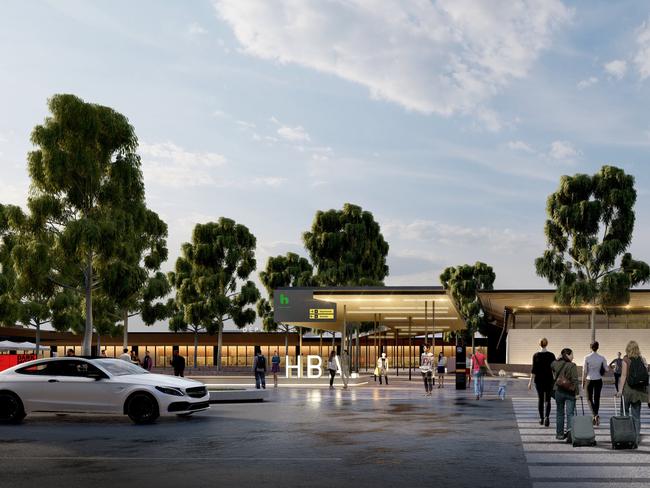Hobart Airport terminal to double in size, CEO Norris Carter says, as draft master plan released
Tasmania’s capital city airport is set for a dramatic expansion and is preparing to welcome millions of additional passengers through its doors each year. SEE THE MASTER PLAN >>
Business
Don't miss out on the headlines from Business. Followed categories will be added to My News.
Hobart Airport is set to undergo a massive transformation that will see its terminal double in size and accommodate millions of additional passengers each year.
The Mercury can exclusively reveal that a dramatic expansion of the terminal serves as the centrepiece of the airport’s draft 20-year master plan, to be unveiled to the state’s business leaders at a breakfast in Hobart on Thursday morning.
It’s understood construction of the new terminal will begin in the next 2-4 years.
Hobart Airport chief executive Norris Carter said the number of travellers coming and going through the airport was predicted to increase from 2.8 million in 2020 to 5.5 million by 2042.

“As a result we are looking at a doubling in the footprint of the terminal from 12,000 square metres to 23,000 square metres,” he said.
“This redeveloped terminal would not only increase space throughout the terminal, but would deliver a much-improved passenger experience, with significantly more food and beverage offerings as well as retail outlets.”
The federal government has committed $60m to upgrading the airport’s runway and airfield facilities, with the hope of further stimulating tourism and increasing export capabilities. Mr Carter said he expected work on the runway to be completed by early 2024.
“This is a really important project, which will not only unlock future passenger and export opportunities, but with our terminal expansion plans, create significant economic growth for Tasmania,” he said.
Visiting Hobart on Wednesday, federal Infrastructure, Transport and Regional Development Minister Catherine King said the promised funding for the runway upgrade would be in the Albanese government’s first budget, to be handed down in October.

“You’ll see that money flow after that,” she said.
“I think the plans are well-advanced for Hobart Airport.”
Community consultation on the draft airport master plan will now begin, with community sessions to be held in Hobart, Dunalley and Sorell later this month.
Mr Carter said the document charted a course for the airport’s future, one that would allow it to pursue further domestic and international flight opportunities, develop air cargo exports, and improve connectivity with Antarctica.
“The plan aims to deliver significant opportunities for Tasmania, with the airport growing to support more than 3,500 jobs and $412 million per year in economic activity by 2042,” he said.





